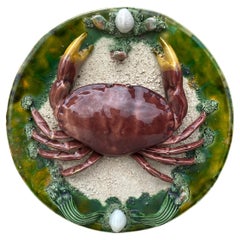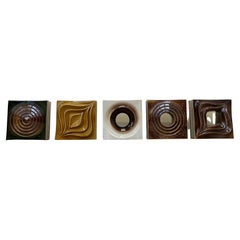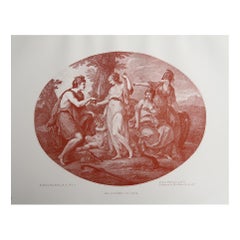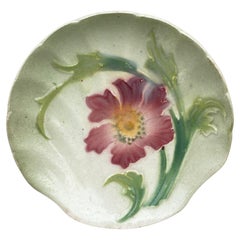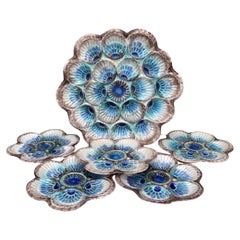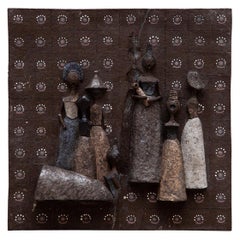European Decorative Art
1940s Rustic Vintage European Decorative Art
Ceramic
1960s Mid-Century Modern Vintage European Decorative Art
Ceramic
Early 1900s Neoclassical Antique European Decorative Art
Paper
Early 1900s Art Nouveau Antique European Decorative Art
Ceramic, Majolica
1950s Mid-Century Modern Vintage European Decorative Art
Ceramic, Faience, Majolica
1970s Mid-Century Modern Vintage European Decorative Art
Ceramic
1890s Victorian Antique European Decorative Art
Ceramic
Late 18th Century Antique European Decorative Art
Paper
1880s Art Nouveau Antique European Decorative Art
Ceramic, Faience
1890s Art Nouveau Antique European Decorative Art
Ceramic
1830s Antique European Decorative Art
Paper
19th Century Baroque Antique European Decorative Art
Pottery
1950s Mid-Century Modern Vintage European Decorative Art
Ceramic
20th Century European Decorative Art
Linen, Paper
2010s Other European Decorative Art
Wood
20th Century Beaux Arts European Decorative Art
Paint
1970s Mid-Century Modern Vintage European Decorative Art
Aluminum
1970s Brutalist Vintage European Decorative Art
Iron
20th Century European Decorative Art
Linen, Paper
1960s Scandinavian Modern Vintage European Decorative Art
Ceramic
21st Century and Contemporary Art Deco European Decorative Art
Resin
20th Century European Decorative Art
Linen, Paper
Early 1900s Country Antique European Decorative Art
Ceramic
Mid-20th Century Mid-Century Modern European Decorative Art
Porcelain
1930s Vintage European Decorative Art
Majolica
Early 20th Century European Decorative Art
Plaster
Early 1900s Antique European Decorative Art
Paper
19th Century Renaissance Antique European Decorative Art
Wood, Paint
1840s Folk Art Antique European Decorative Art
Paper
1840s Folk Art Antique European Decorative Art
Paper
18th Century Rococo Antique European Decorative Art
Canvas
1890s Rustic Antique European Decorative Art
Ceramic, Majolica
18th Century Arts and Crafts Antique European Decorative Art
Ceramic
1940s Mid-Century Modern Vintage European Decorative Art
Marble
20th Century European Decorative Art
Paper
1890s Country Antique European Decorative Art
Ceramic, Faience
21st Century and Contemporary Organic Modern European Decorative Art
Stainless Steel
Late 19th Century Antique European Decorative Art
Faience
1840s Folk Art Antique European Decorative Art
Paper
1990s European Decorative Art
Paper
1890s Country Antique European Decorative Art
Ceramic
1880s Victorian Antique European Decorative Art
Ceramic
Late 20th Century European Decorative Art
Wood
21st Century and Contemporary Art Deco European Decorative Art
Resin
Late 19th Century Antique European Decorative Art
Paper
Early 19th Century Early Victorian Antique European Decorative Art
Glass, Oak
1890s Rustic Antique European Decorative Art
Ceramic
2010s Black Forest European Decorative Art
Antler, Wood
1880s French Provincial Antique European Decorative Art
Ceramic, Faience
1880s Rustic Antique European Decorative Art
Ceramic
Mid-20th Century Mid-Century Modern European Decorative Art
Wool
1880s Aesthetic Movement Antique European Decorative Art
Ceramic, Faience, Majolica
Mid-20th Century Mid-Century Modern European Decorative Art
Ceramic, Faience
1910s Vintage European Decorative Art
Paper
Late 18th Century Gustavian Antique European Decorative Art
Mirror, Pine, Giltwood
Mid-20th Century Mid-Century Modern European Decorative Art
Pottery
1920s Vintage European Decorative Art
Faience
Mid-20th Century European Decorative Art
Plaster
1790s Rococo Antique European Decorative Art
Faience
20th Century Mid-Century Modern European Decorative Art
Ceramic
Read More
At Colonial Williamsburg, Everything Old Is New Again
With the help of a new director, the Virginia institution's folk art and decorative arts museums are undergoing extensive upgrades.
New York’s Hirschl & Adler Showcases the American Workmanship and Design Panache of Neoclassical Treasures
The gallery's latest exhibition proves that museum-quality pieces entice and inspire, whether in traditional or more modern interiors.
